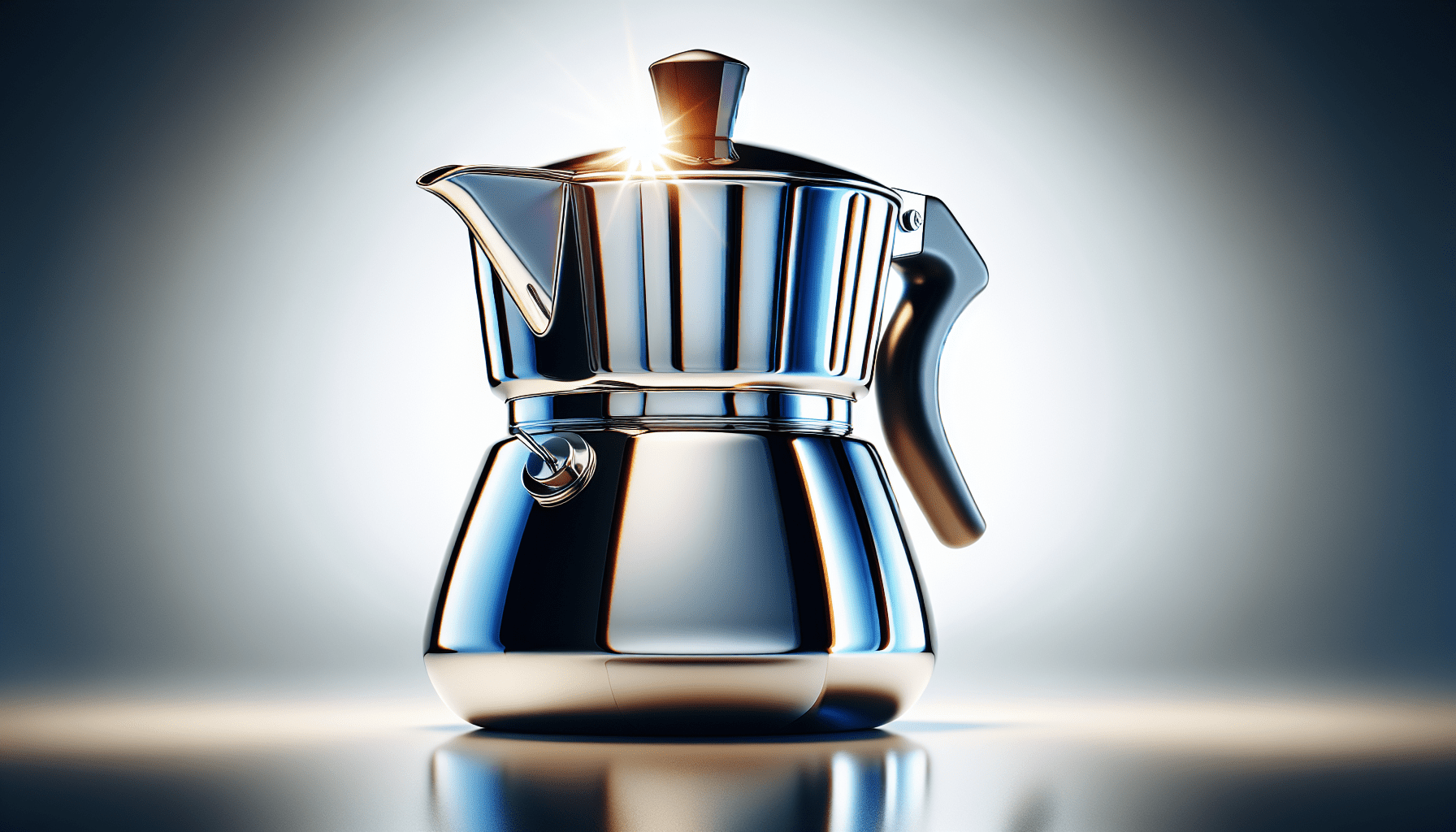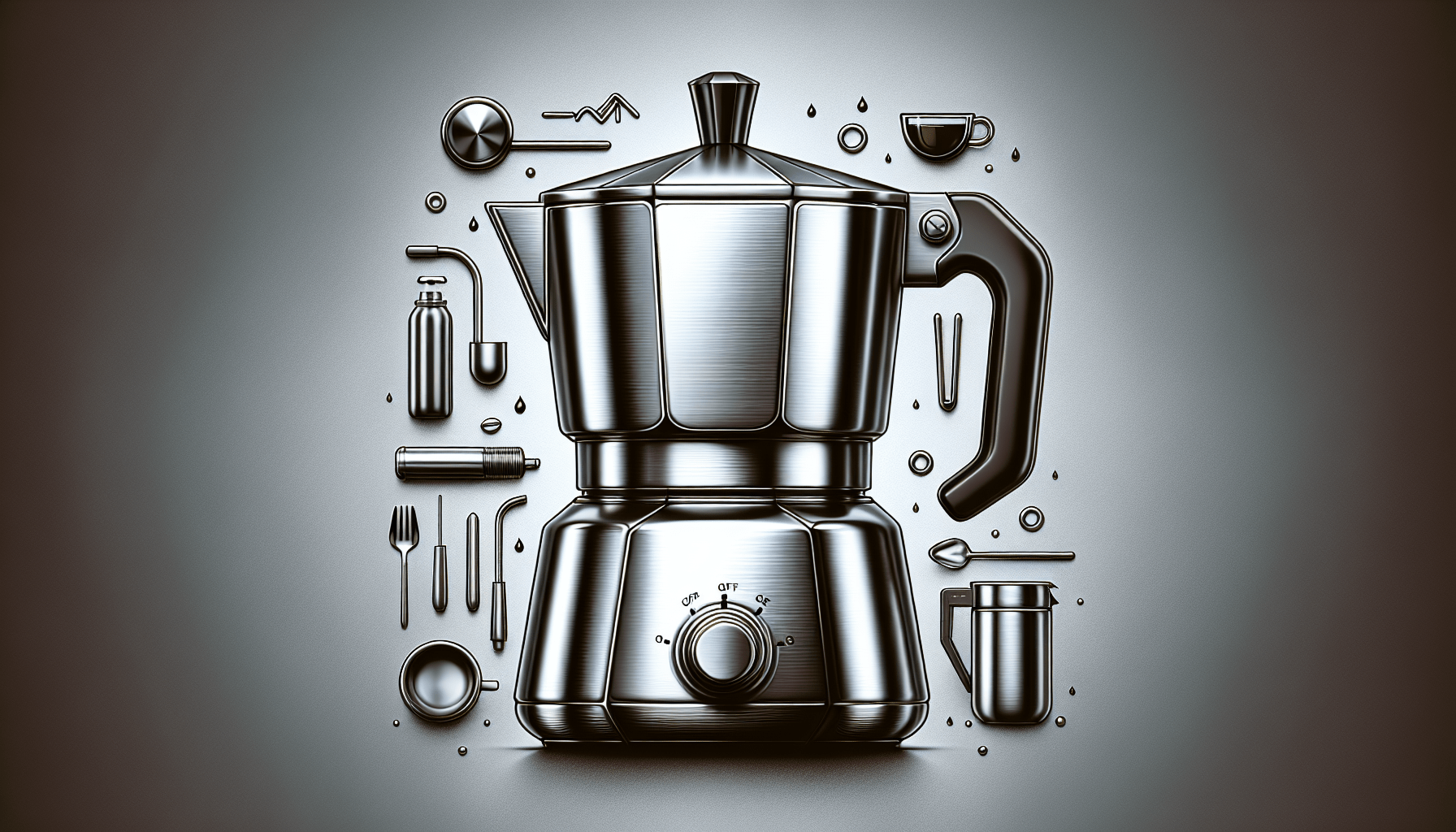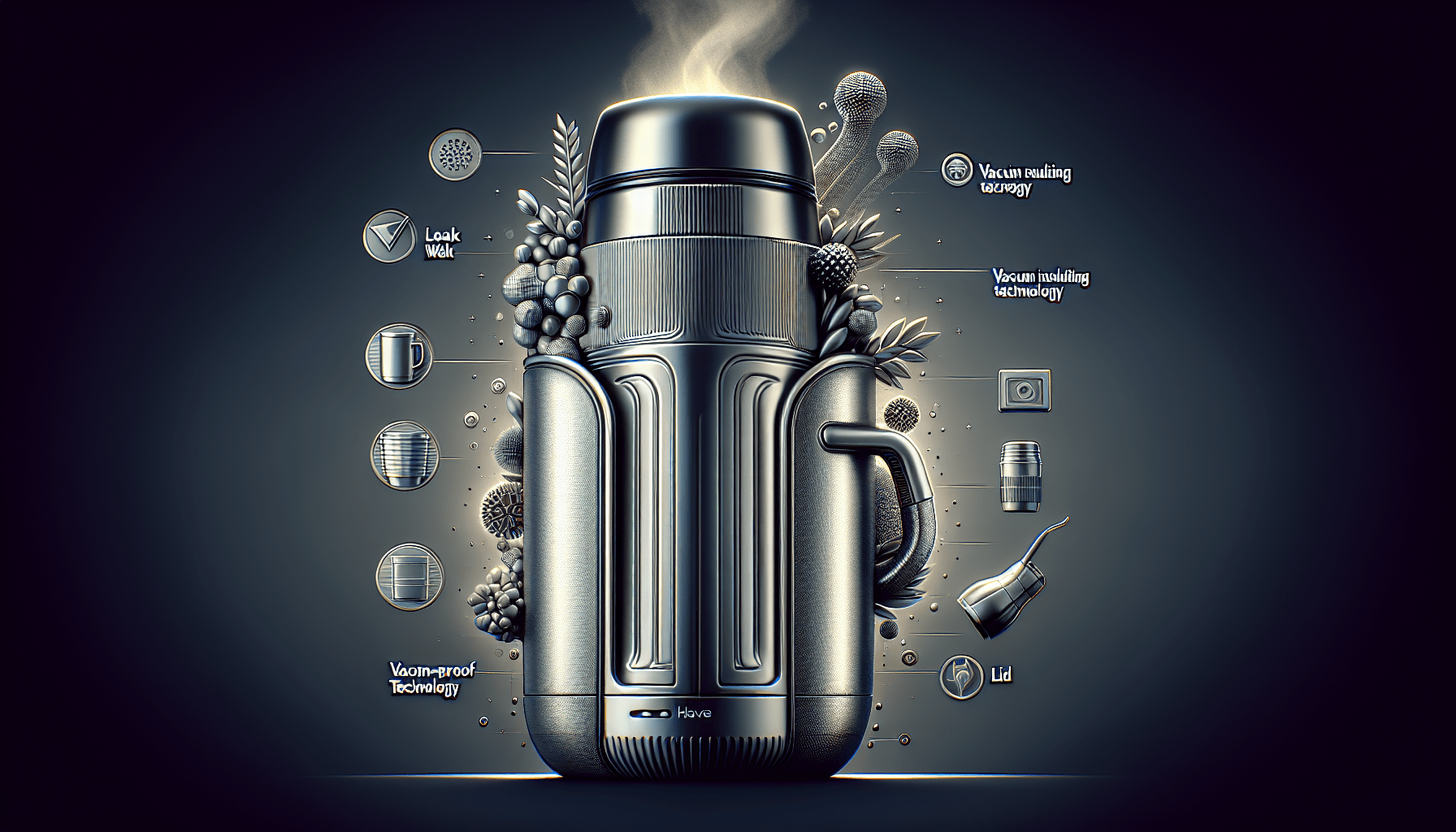If you’re a coffee enthusiast and own a stainless steel coffee pot, you might be wondering how to keep it sparkling clean and free from any lingering coffee stains or odors. Cleaning a stainless steel coffee pot doesn’t have to be a daunting task, and with a few simple steps, you can have your pot looking as good as new. In this article, we’ll explore some effective methods and tips on how to clean your stainless steel coffee pot to ensure a fresh and flavorful cup of coffee every time. Cleaning a stainless steel coffee pot may seem like a daunting task, but with the right materials and techniques, it can be a breeze. In this article, we will guide you through the step-by-step process of cleaning your coffee pot to keep it looking shiny and new. Whether you need to perform a regular cleaning, deep clean, remove odors, or prevent stains and residue, we’ve got you covered. So grab your cleaning supplies, put on your cleaning gloves, and let’s get started!
Regular Cleaning
Rinse the pot
Before you begin the cleaning process, it’s important to rinse out the coffee pot. This will help remove any residual coffee grounds or loose debris. Simply pour out any remaining coffee, and give the pot a quick rinse with warm water.
Wash with warm, soapy water
To clean the interior of your stainless steel coffee pot, fill it with warm water and add a few drops of dish soap. Using a soft sponge or cloth, gently scrub the interior to remove any coffee stains and residue. Be sure to clean the entire surface, including the bottom and the handle.
Rinse thoroughly
After washing the coffee pot with soapy water, make sure to rinse it thoroughly. This will help remove any remaining soap residue. Rinse the pot under warm running water, ensuring that all the soap is completely washed away.
Dry with a soft cloth
Once the pot is rinsed, use a soft cloth to dry it. Avoid using abrasive materials such as paper towels, as they can scratch the stainless steel surface. Instead, choose a soft cloth that won’t leave behind any lint or fibers.
Remove mineral deposits
Over time, your stainless steel coffee pot may develop mineral deposits, especially if you live in an area with hard water. To remove these deposits, fill the pot with equal parts of white distilled vinegar and warm water. Let the solution sit for a few minutes, then scrub the interior with a soft sponge or cloth. Rinse thoroughly with warm water.
Remove coffee stains
Coffee stains can be stubborn, but there’s a simple solution to remove them. Sprinkle baking soda onto a damp sponge or cloth, and gently scrub the stained areas. The mild abrasive properties of baking soda will help lift the stains without scratching the stainless steel. Rinse the pot well to remove any residue.
Polish the pot
To bring back the shine to your stainless steel coffee pot, you can use a commercial stainless steel cleaner or make your own natural polish. Mix equal parts of white distilled vinegar and water, and apply the solution to the pot with a soft cloth. Gently buff the surface in circular motions until it shines. Rinse the pot thoroughly to remove any vinegar residue.
Prevent future stains
To avoid future coffee stains on your stainless steel coffee pot, consider using a coffee filter or a disposable paper filter when brewing your coffee. These filters can help prevent coffee grounds from settling at the bottom of the pot, reducing the chances of stains. Additionally, wiping the pot dry after each use can also help prevent residue buildup.
Deep Cleaning
Make a cleaning solution
For a deeper clean, you’ll need to create a more potent cleaning solution. Fill the coffee pot with equal parts of white distilled vinegar and warm water. The vinegar’s acidity will help break down any stubborn stains and mineral deposits.
Soak the pot
Once you’ve prepared the cleaning solution, place the coffee pot in the sink or a large basin. Allow it to soak for at least 30 minutes, or even overnight if the stains and deposits are particularly stubborn.
Scrub with a nylon brush
After soaking, take a nylon brush and scrub the interior of the pot. The bristles of a nylon brush are gentle enough to clean stainless steel without scratching the surface. Concentrate on areas with stains or residue, applying a bit of elbow grease to ensure a thorough clean.
Rinse thoroughly
After scrubbing, rinse the coffee pot thoroughly under warm running water to remove any vinegar residue. Make sure to rinse both the interior and exterior until the water runs clear.
Remove stubborn stains
If there are still stubborn stains remaining after the soak and scrub, you can create a paste with baking soda and water. Apply the paste to the stained areas and let it sit for a few minutes. Then, using a nylon brush or sponge, gently scrub the stains until they lift. Rinse the pot well to remove any baking soda residue.
Remove burnt-on coffee
Burnt-on coffee stains can be particularly challenging to remove, but don’t worry, we’ve got a solution. Fill the pot with warm water and add a few teaspoons of dish soap. Bring the water to a boil on the stove, and let it simmer for a few minutes. This will help loosen the burnt-on coffee stains. After simmering, let the pot cool down, then scrub the stains with a nylon brush. Rinse thoroughly.
Remove hard water deposits
To tackle hard water deposits, soak the pot in a mixture of equal parts white distilled vinegar and warm water. Allow it to sit for at least 30 minutes or more if needed. Then, scrub the interior with a nylon brush to remove the deposits. Rinse well to remove any vinegar residue.
Clean the exterior
Don’t forget about the exterior of your stainless steel coffee pot. Clean it using warm, soapy water and a soft cloth. Rinse thoroughly and dry with a soft cloth to prevent water spots or stains.
Dry the pot
After completing the deep cleaning process, make sure to dry the pot thoroughly. This will prevent water spots and keep your stainless steel coffee pot looking its best.
Removing Odors
Use vinegar and water solution
If your coffee pot has developed an unpleasant odor, you can use a vinegar and water solution to eliminate it. Fill the pot with equal parts white distilled vinegar and water, and let it sit for a few hours or overnight. The vinegar will neutralize the odor-causing bacteria, leaving your pot fresh and odor-free. Rinse thoroughly before using the pot again.
Use baking soda
Another effective method to remove odors from a stainless steel coffee pot is to use baking soda. Sprinkle baking soda into the pot, and add warm water to create a paste. Let the paste sit for a few hours or overnight. Baking soda is known for its odor-absorbing properties and will help eliminate any lingering smells. Rinse thoroughly before using the pot again.
Leave overnight
For tough odors, you can combine the power of vinegar and baking soda. Fill the pot with equal parts white distilled vinegar and warm water, and add a few tablespoons of baking soda. Let the solution sit overnight. The combination of vinegar and baking soda will work together to tackle even the strongest odors. Rinse thoroughly before use.
Rinse thoroughly
After using vinegar or baking soda to remove odors, it’s crucial to rinse the pot thoroughly with warm water. This will ensure that all the cleaning solution is completely washed away, leaving your pot fresh and ready to be used again.
Try lemon juice
If you prefer a citrusy scent, you can use lemon juice to remove odors from your stainless steel coffee pot. Cut a lemon in half and squeeze the juice into the pot. Fill the pot with warm water and let it sit for a couple of hours or overnight. Lemon juice has natural deodorizing properties that can help eliminate unpleasant smells. Rinse thoroughly before using the pot again.
Use ice cubes
If you’re dealing with stubborn odors, you can try using ice cubes to freshen up your stainless steel coffee pot. Fill the pot halfway with ice cubes, then add enough water to cover the ice cubes. Swirl the pot gently, allowing the ice cubes to scrape away any residue and neutralize odors. Rinse thoroughly afterward.
Preventing Stains and Residue
Empty the pot after use
One of the best ways to prevent stains and residue buildup in your stainless steel coffee pot is to empty it promptly after each use. Leaving coffee sitting in the pot for extended periods can lead to stains and residue that are more challenging to remove.
Rinse the pot with water
After emptying the pot, give it a quick rinse with water to remove any residual coffee grounds. This simple step can help prevent stains and residue from clinging to the stainless steel surface.
Avoid leaving coffee in the pot
While it may be tempting to reserve some coffee for later, it’s best to avoid leaving coffee in the pot for an extended period. Coffee sitting in the pot can lead to stains and residue buildup over time, affecting the taste of future brews.
Avoid using abrasive cleaners
When it comes to cleaning your stainless steel coffee pot, it’s essential to avoid using abrasive cleaners or scrubbing pads. These can scratch the stainless steel surface, making it more susceptible to stains and damage.
Use filtered water
Using filtered water when brewing your coffee can help prevent mineral deposits and reduce the chances of staining your stainless steel coffee pot. The minerals present in tap water can build up over time, leaving unsightly deposits on the pot’s interior.
Descale regularly
To keep your stainless steel coffee pot in optimal condition, it’s important to descale it regularly. Mineral deposits can accumulate over time, affecting the performance and taste of your coffee. Follow the manufacturer’s instructions for descaling or use a commercial descaling product.
Avoid contact with harsh chemicals
To preserve the appearance and integrity of your stainless steel coffee pot, avoid exposing it to harsh chemicals or cleaning agents. These can damage the stainless steel and lead to discoloration or corrosion.
Clean the pot regularly
Regular cleaning is key to maintaining your stainless steel coffee pot’s cleanliness and appearance. By following the steps outlined in the regular cleaning section, you can prevent stains, residue, and odors from building up over time.
Tips and Warnings
Do not use bleach
Bleach can be extremely harsh and corrosive, and it should never be used to clean a stainless steel coffee pot. It can cause discoloration, damage the stainless steel surface, and compromise the pot’s overall integrity.
Avoid using steel wool
Steel wool contains abrasive particles that can scratch and damage stainless steel. Always opt for a soft sponge or cloth when cleaning your coffee pot to preserve its shine and prevent scratches.
Read the manufacturer’s instructions
Every stainless steel coffee pot is different, so it’s important to familiarize yourself with the manufacturer’s instructions for proper cleaning and maintenance. These instructions may provide specific guidelines or precautions that should be followed to avoid damage.
Handle with care
When cleaning your stainless steel coffee pot, handle it with care to avoid accidental damage or breakage. Stainless steel is durable, but rough handling or dropping the pot can lead to dents, scratches, or even fractures.
Keep out of reach of children
Cleaning supplies and solutions should always be stored in a safe place away from the reach of children. Ensure that your stainless steel coffee pot is out of their reach as well, as it can be heavy and potentially dangerous if mishandled.
Do not use harsh scrubbing pads
Harsh scrubbing pads can damage the stainless steel surface of your coffee pot. Instead, opt for a soft sponge or cloth that is suitable for cleaning stainless steel and won’t leave any scratches behind.
Avoid using chlorine-based cleaners
Chlorine-based cleaners can be corrosive and damaging to stainless steel. Avoid using such cleaners on your coffee pot to prevent discoloration and potential harm to the pot’s structure.
Avoid exposing the pot to high heat
Exposing your stainless steel coffee pot to high heat can cause discoloration and damage. Avoid placing the pot directly on a hot stovetop or using it in the oven. Always follow the manufacturer’s guidelines for safe usage and care.
By following these comprehensive cleaning methods, you can keep your stainless steel coffee pot looking its best and enjoy the perfect cup of coffee every time. Remember to clean it regularly, prevent stains and residue, and handle it with care. With a little maintenance, your stainless steel coffee pot will continue to serve you delicious coffee for years to come. Cheers!




